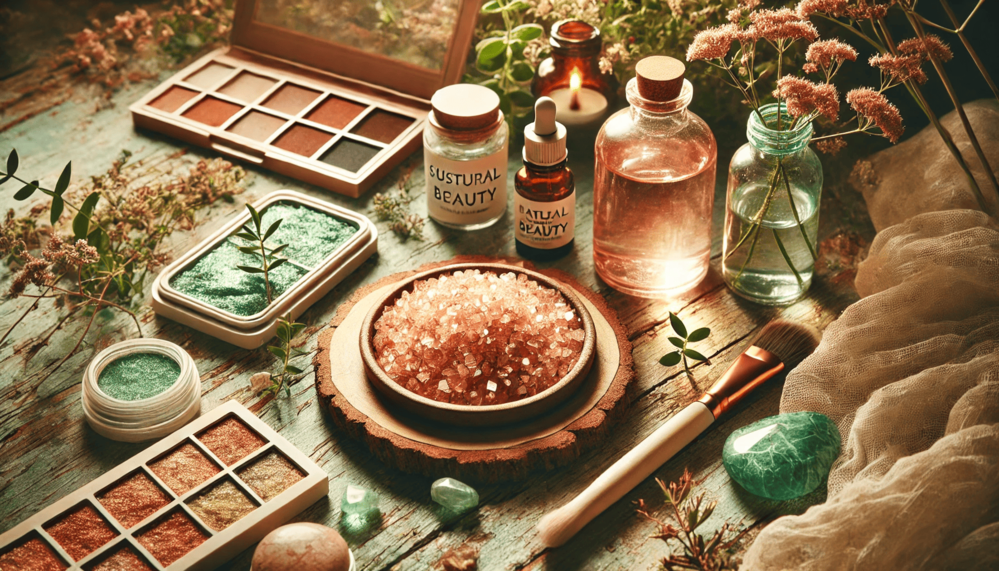In recent years, the beauty industry has been embracing sustainability at an unprecedented pace. Consumers are becoming more conscious of their purchasing choices and seeking products that align with their ethical and environmental values. Among various materials, mica, a naturally occurring mineral known for its shimmer and resilience, plays a significant role in cosmetics, skincare, and personal care products. This mineral is found in everything from highlighters and eyeshadows to foundations and nail polishes, adding a pearly or glittery effect. However, the journey of mica from mine to makeup palette has sparked essential conversations about sustainability, ethical sourcing, and consumer awareness.
Why Mica Matters in Beauty Products
Mica’s popularity in beauty products stems from its natural reflective properties, which create a soft, glowing effect on the skin. These qualities make it a preferred choice for products where shimmer and radiance are essential. Unlike synthetic alternatives, mica is also biodegradable, breaking down in the environment over time, which aligns with the growing consumer demand for sustainable ingredients.
Moreover, mica is not limited to cosmetics; it is widely used in automotive, electronics, and construction industries due to its heat-resistant and insulating properties. This diversity makes it a valuable mineral globally, particularly in countries with large mica deposits, such as India, which supplies approximately 60% of the world’s mica.
The Ethical Dilemma: Mica Mining and Social Impact
The mica industry, however, faces ethical challenges. Many mica mines, particularly in regions like Jharkhand and Bihar in India, operate informally, without robust oversight or labor standards. The lack of regulation has led to issues of child labor, low wages, and unsafe working conditions. These concerns prompted global outrage and led companies to reconsider their mica sourcing practices, pushing for more transparency and accountability.
In response, organizations like the Responsible Mica Initiative (RMI) were established. The RMI works to improve labor conditions in the mica supply chain by advocating for fair wages, child labor elimination, and a legal framework to support ethical mica mining. Cosmetics companies, including industry leaders like L’Oréal and Estée Lauder, have committed to sourcing mica ethically, often participating in initiatives to audit and verify the supply chain from mine to manufacturer
The Rise of Synthetic Mica as a Sustainable Alternative
To avoid ethical issues, some beauty brands are turning to synthetic mica, which is lab-created, eliminating the need for mining altogether. Synthetic mica offers the same reflective qualities as natural mica and is free from impurities, providing a more consistent and brilliant finish. Brands using synthetic mica often market it as “ethical mica,” reassuring consumers that the ingredient is free from labor exploitation.
However, while synthetic mica addresses social concerns, it does not match natural mica’s environmental benefits. The production of synthetic mica involves energy-intensive processes, and the material does not biodegrade as easily as natural mica, posing a different set of environmental challenges.
How Consumers Can Support Sustainable Beauty
Consumers hold significant influence in promoting sustainable and ethical practices within the beauty industry. By choosing brands that prioritize transparent sourcing and are certified by organizations committed to ethical labor practices, consumers can encourage more companies to follow suit. Many brands now proudly display their commitment to “clean beauty” and ethical sourcing on their packaging and websites, making it easier for consumers to make informed decisions.
For those interested in sustainable beauty, supporting companies that actively participate in initiatives like the Responsible Mica Initiative or those that provide thorough traceability in their sourcing practices is essential. Reading product labels and researching brands’ ethical policies can go a long way in supporting positive change.
Conclusion: Mica’s Future in Beauty and Beyond
Mica remains a vital component in beauty products, and its reflective qualities continue to captivate consumers. The shift towards sustainability has redefined mica’s role in the beauty industry, pressing companies to adopt ethical practices and invest in supply chain transparency. As more brands take a stand, the future of mica sourcing may become a model for sustainability and responsibility across industries, ensuring beauty products shine as brightly in principle as they do on the skin.
By championing sustainable and ethical practices in mica sourcing, the beauty industry is taking strides toward a more responsible future, proving that beauty can indeed be more than skin-deep.









